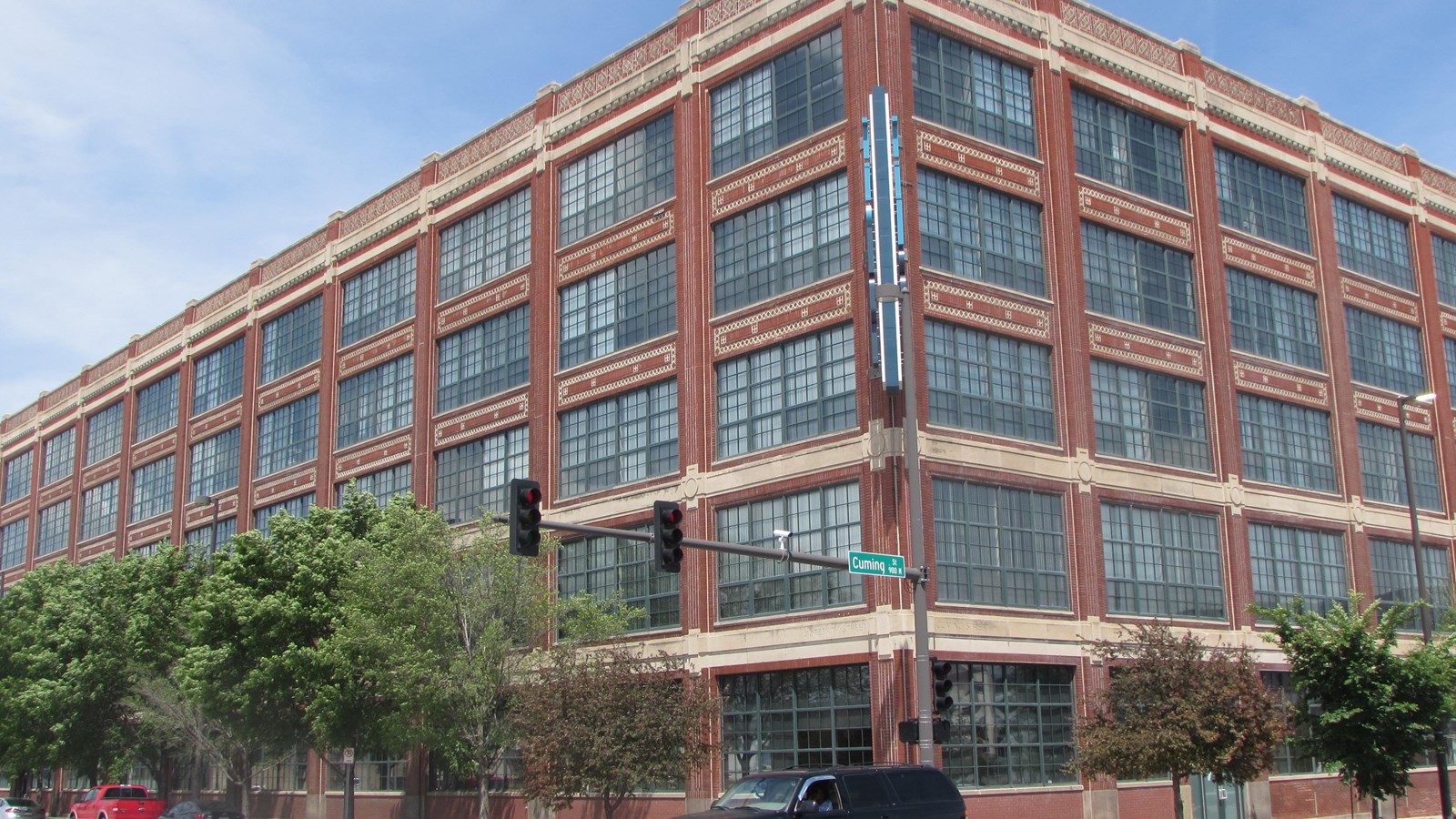Last updated: March 23, 2023
Place
Omaha Ford Motor Company Assembly Plant

David Calease, NPS
Quick Facts
Location:
1514-1524 Cuming Street
Significance:
Industry; Architecture
Designation:
National Register of Historic Places
OPEN TO PUBLIC:
No
MANAGED BY:
Private Property Owner
The Omaha Ford Motor Company Assembly Plant occupies half of a city block along Cuming Street. Architect Albert Kahn designed the building as a Ford Model T assembly plant, which was completed in 1916. It is in the National Register of Historic Places for its significance as both an example of the architectural work of Kahn and as an example of the changing manufacturing processes and the rise of the automobile.
The Ford Motor Company produced the first Model T in Detroit, Michigan in 1908. Although the Model T was not the first automobile, the new model marked an embrace of more efficient strategies of mass production. While the high cost of automobiles had previously made them a luxury of the rich, these changes lowered their cost and made them more accessible to middle class Americans. Prior to the Ford plant’s adoption of new manufacturing strategies, each step of the assembly process of automobiles was manufactured in different buildings. It took time, effort, and money to coordinate these different pieces. A new “all-under-one-roof” strategy was gaining popularity at the turn of the century to streamline the manufacturing process. The Omaha Ford Motor Company Assembly Plant represented the new restructured system, one in which each step of the production of an automobile was done in the same place using interchangeable parts. The efficient process reduced the cost of the Model T significantly, putting it within the price range of the average American.
Albert Kahn designed numerous “all-under-one-roof” structures for diverse clients between 1903 and 1916. He is credited as the first and primary designer of industrial architecture in the nation in the early-twentieth century. The Omaha Ford Motor Company Assembly Plant displayed this industrial architecture through its concrete construction, large column bays, and large windows. The interior provided large open spaces for assembly activities while the windows allowed ventilation and natural light. The plant also included docks for railroad cars that enabled both the plant to receive and ship goods. It was also located along its own railroad spur.
Today the Omaha Ford Motor Company Assembly Plant is better known as the Tip Top Apartment Building, which also includes office space. The exterior of the building has retained much of its original fabric and historic integrity.
The Ford Motor Company produced the first Model T in Detroit, Michigan in 1908. Although the Model T was not the first automobile, the new model marked an embrace of more efficient strategies of mass production. While the high cost of automobiles had previously made them a luxury of the rich, these changes lowered their cost and made them more accessible to middle class Americans. Prior to the Ford plant’s adoption of new manufacturing strategies, each step of the assembly process of automobiles was manufactured in different buildings. It took time, effort, and money to coordinate these different pieces. A new “all-under-one-roof” strategy was gaining popularity at the turn of the century to streamline the manufacturing process. The Omaha Ford Motor Company Assembly Plant represented the new restructured system, one in which each step of the production of an automobile was done in the same place using interchangeable parts. The efficient process reduced the cost of the Model T significantly, putting it within the price range of the average American.
Albert Kahn designed numerous “all-under-one-roof” structures for diverse clients between 1903 and 1916. He is credited as the first and primary designer of industrial architecture in the nation in the early-twentieth century. The Omaha Ford Motor Company Assembly Plant displayed this industrial architecture through its concrete construction, large column bays, and large windows. The interior provided large open spaces for assembly activities while the windows allowed ventilation and natural light. The plant also included docks for railroad cars that enabled both the plant to receive and ship goods. It was also located along its own railroad spur.
Today the Omaha Ford Motor Company Assembly Plant is better known as the Tip Top Apartment Building, which also includes office space. The exterior of the building has retained much of its original fabric and historic integrity.
